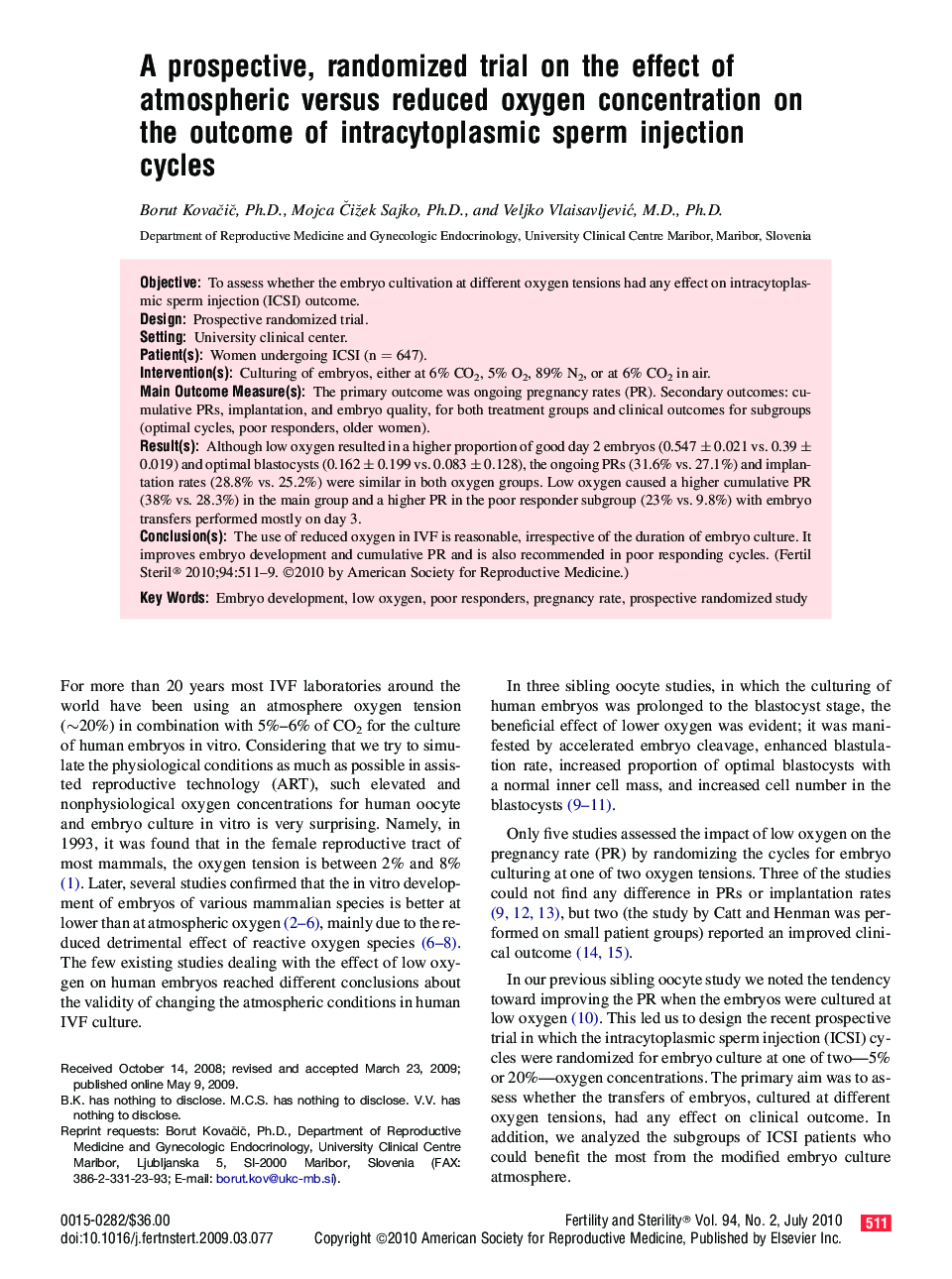| Article ID | Journal | Published Year | Pages | File Type |
|---|---|---|---|---|
| 3933427 | Fertility and Sterility | 2010 | 9 Pages |
ObjectiveTo assess whether the embryo cultivation at different oxygen tensions had any effect on intracytoplasmic sperm injection (ICSI) outcome.DesignProspective randomized trial.SettingUniversity clinical center.Patient(s)Women undergoing ICSI (n = 647).Intervention(s)Culturing of embryos, either at 6% CO2, 5% O2, 89% N2, or at 6% CO2 in air.Main Outcome Measure(s)The primary outcome was ongoing pregnancy rates (PR). Secondary outcomes: cumulative PRs, implantation, and embryo quality, for both treatment groups and clinical outcomes for subgroups (optimal cycles, poor responders, older women).Result(s)Although low oxygen resulted in a higher proportion of good day 2 embryos (0.547 ± 0.021 vs. 0.39 ± 0.019) and optimal blastocysts (0.162 ± 0.199 vs. 0.083 ± 0.128), the ongoing PRs (31.6% vs. 27.1%) and implantation rates (28.8% vs. 25.2%) were similar in both oxygen groups. Low oxygen caused a higher cumulative PR (38% vs. 28.3%) in the main group and a higher PR in the poor responder subgroup (23% vs. 9.8%) with embryo transfers performed mostly on day 3.Conclusion(s)The use of reduced oxygen in IVF is reasonable, irrespective of the duration of embryo culture. It improves embryo development and cumulative PR and is also recommended in poor responding cycles.
